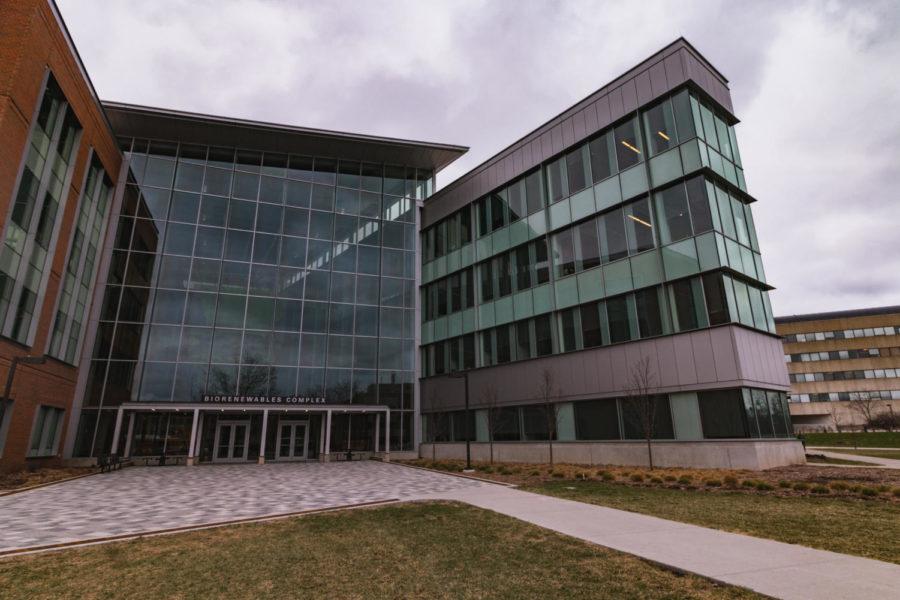$2.5 million grant to help biorenewable chemicals
Photographer: Alec J Giljohann
Iowa State’s Biorenewables Research Laboratory on Bissell road near the College of Design. Recently, Iowa State added chief of technology for biobased products as a role in their biosciences-based economic growth initiative.
November 11, 2018
Iowa State received a $2.5 million grant from the U.S.Department of Energy’s Bioenergy Technologies Office. This three year grant will be used to research what scientists call “bioprivilaged molecules.”
Bioprivilaged molecules create a library of compounds used to make green chemicals, said Brett Shanks, engineering professor and director of the Center of Biorenewable Chemicals (CBiRC) at Iowa State.
“We call [them] bioprivilaged because the biological sourcing of it creates unique opportunities to make molecules that we can’t make any other way,” Shanks said.
“When we started this center, a lot of the focus was really on trying to make the same chemicals that we are already making from petrochemicals, and make those from biomass so that they are renewable carbon instead of one use carbon,” Shanks said.
Right now, carbon is coming from oils and gases. Carbon is extremely cheap from crude oil, Shanks said. After looking at environmental impact, renewable carbon from biological molecules is the best answer.
Chemicals are used to make household cleaners, insect repellant, cosmetics and more.
Renewable carbon would make existing chemicals that are used everyday safer to use and better for the Earth. The problem though, is finding the right kind of molecule that would create the chemical they want.
“There’s hundreds of chemicals, so how do we possibly trip upon the right ones?” Shanks said. To start, scientists work backwards.
Scientists start with a molecule that worked to create a chemical, and then work backwards to find the process of how they got there. Shanks said this is where the grant comes into play.
This grant is part of the three step system that narrows down this vast amount of biological molecules to find what they need.
The end goal is to “develop a computer code that can go in and essentially crawl through the literature and find performance of certain molecules and application,” Shanks said.
This “literature” refers to studies done for decades by scientists who have come along molecules that possess properties that are advantageous for making these green chemicals.
The first of three steps takes place at the University of Washington, where researchers are data mining to find the bioprivileged molecules that can be diversified to create a compound with useful properties for a specific chemical.
The second step takes place at Northwestern University where researchers are finding the molecular structures that will be useful in the production of the chemicals.
The third step is where Iowa State leads the research.
“We lead the grant in doing the synthesis and testing of the actual molecule,” Shanks said. “So to me, the really cool part about all of this is biomass allows us, because it is intrinsically different from crude oil as a source of carbon, allows us to access molecules we can’t get to from crude oil.”
This grant and three step system is helping to create the stepping stones to finding new molecules that scientists otherwise would not know about.
“One of the things I am excited about is we grow a lot of biomass in Iowa … I think we have the opportunity for Iowa to be one of the leaders in producing these kind of compounds,” Shanks said.







